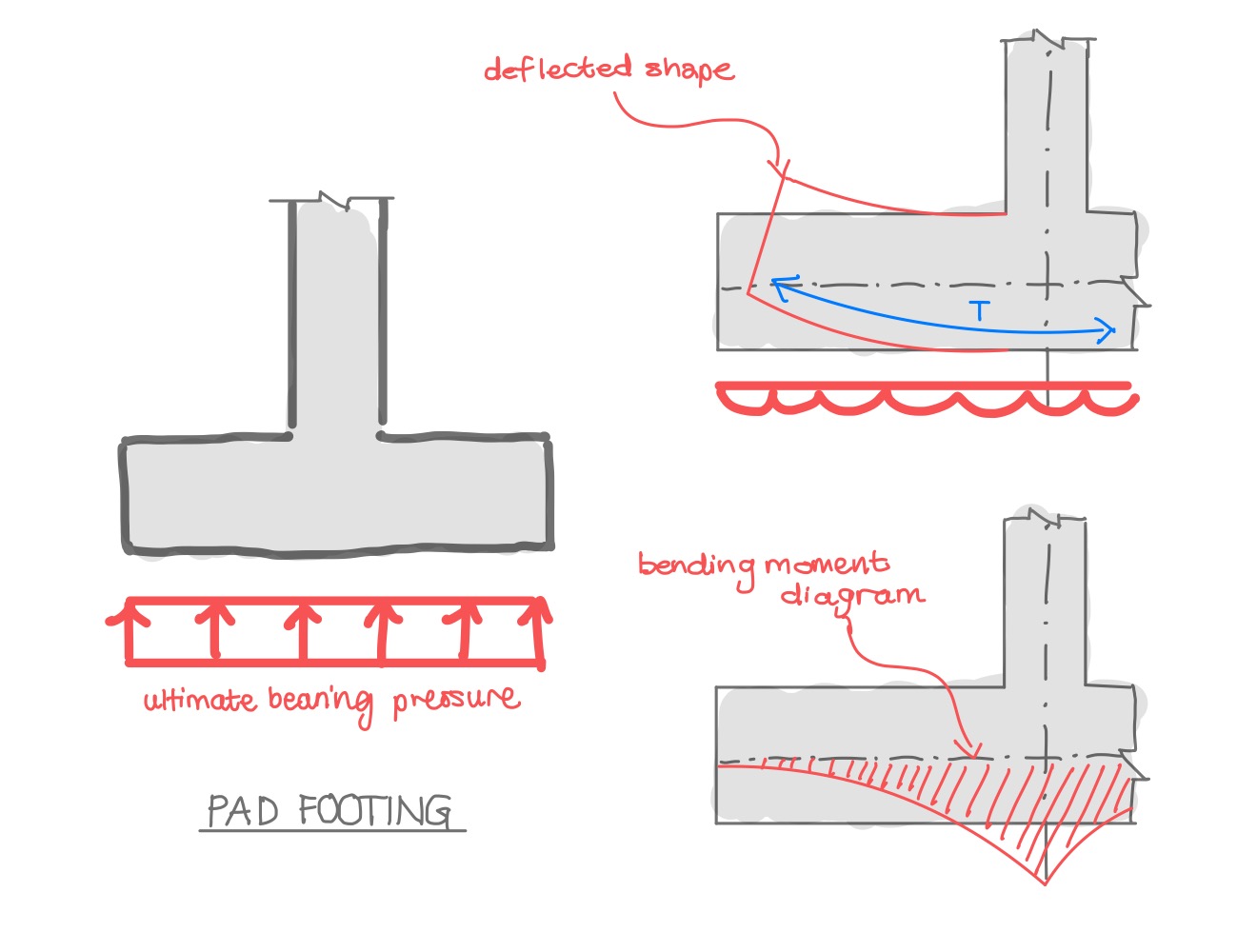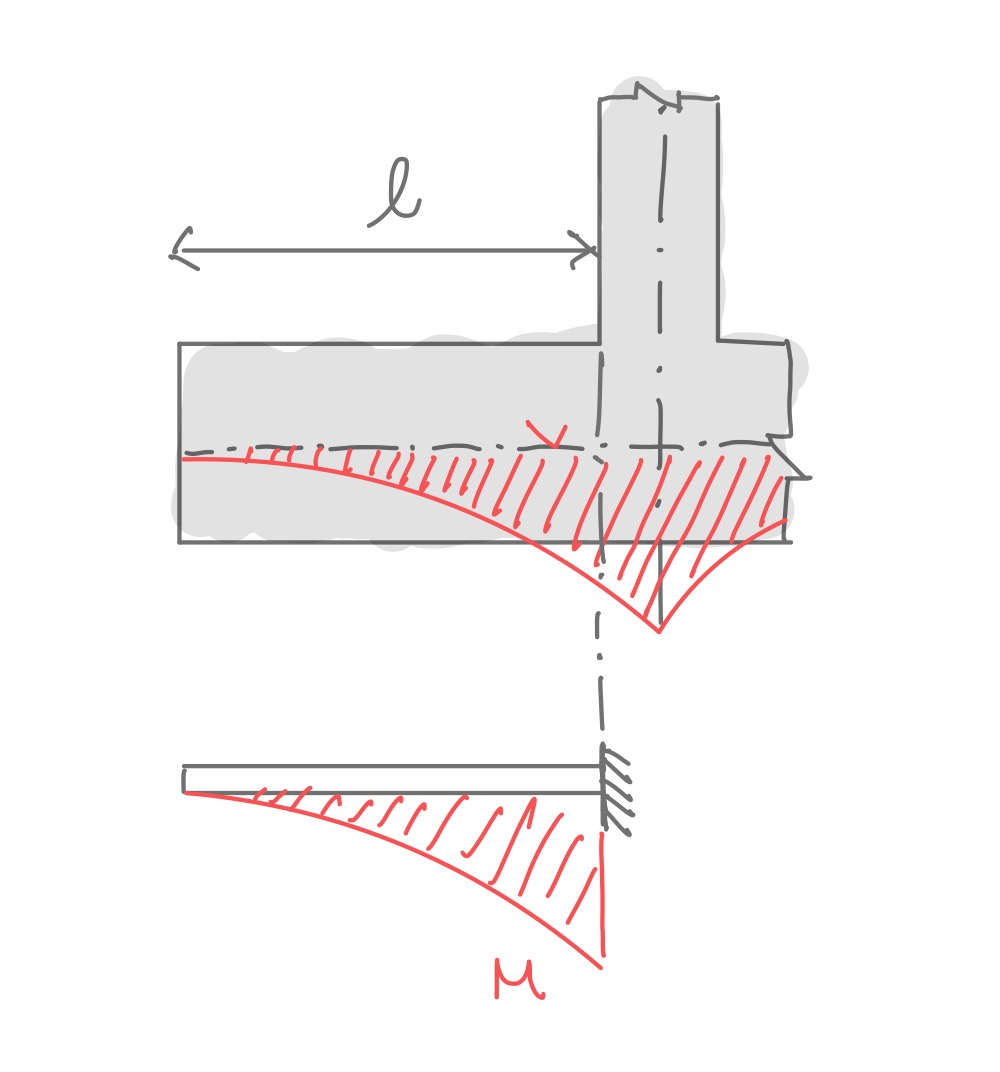Initial Sizing
The initial sizing may be based on the
N is the unfactored dead + live loads, and qallow is the soil
Pad footings are generally square unless there are some specific spatial constaints. The depth (thickness) of the
※ How to Calculate the Allowable Bearing Capacity of Soils? Explained in 1-minute.
Example Calculation
Consider a
(refer to the post on soil allowable bearing capacities)
Required Footing Area = 1600 kN / 200 kN/m2 = 8 m2
Therefore use a 3.0 x 3.0 m pad footing (A = 9 m2), 0.75 m thick.
Rebar Design (Bending)
We have sized the pad footing above to distribute the loads back to the ground. The pad is applying pressure on the ground, but conversely the ground is also effectively applying the bearing pressure to our footing.
Outside of the column "stem", the pad footing acts like a cantilever beam in bending, with a UDL applied to the underside from the ground bearing pressure. So the bottom of the pad footing experiences tension, which we need to provide rebar for. See diagram below.

For this design, we will consider Eurocode and convert our bearing pressure to a ULS ultimate bearing pressure by multiplying by 1.4. The UDL, w, per meter length of the footing on the cantilever area is therefore:
